PRI-8800——攻破技术壁垒,开启SOM分解对温度响应的新培养和测定模式
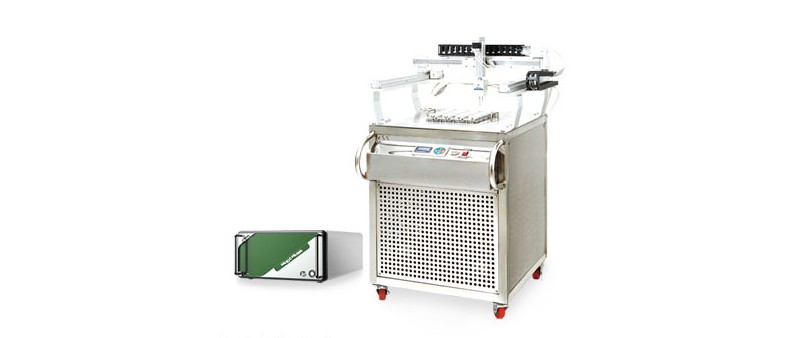
土壤有机质(SOM)对温度变化的响应,不仅影响土壤养分循环、还影响陆地生态系统碳源/汇效应。土壤有机质分解的温度敏感性(Q10)不仅是生态学和土壤学研究的核心科学问题之一,也是全球变化生态学研究的热点领域。国内外学者对Q10的影响因素或机制开展了大量卓有成效的研究工作,并有不少相关的综述或展望;然而,迄今为止有关培养与测定模式的探讨却非常少。
技术难点
传统上,科研人员广泛采用了恒温培养+间断测定模式(CDM模式);即通过设置3~6个恒定温度对土壤进行培养(如5、10、15、20、25℃等),然后在天、周、月间隔,测定土壤有机碳分解速率(Rs);在测试方法上,大多采用碱液吸收法或气相色谱法进行测定,然后再利用所测定的Rs和对应温度计算Q10。后来,也有人在此基础上提出将土壤培养改良为连续变温的模式,即连续变温培养+间段测试模式(VDM模式)。这两种经典模式推动了SOM分解对温度响应的研究,但却无法从理论、算法、操作上克服其固有的问题。
为了克服CDM和VDM模式的弊端,在总结前人相关研究的基础上,北京普瑞亿科科技有限公司和中国科学院地理科学与资源研究所何念鹏研究团队合作研发了PRI-8800全自动变温土壤培养温室气体(同位素)分析系统,并发展了Q10研究的连续变温培养+连续自动测试的新模式(如图所示)。
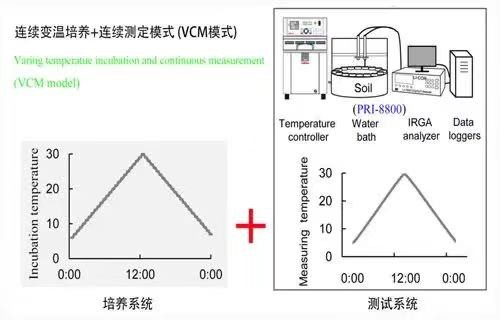
SOM分解对温度变化响应的连续变温培养+连续测定模式(VCM模式)
VCM模式充分利用连续变温培养+连续–高频土壤微生物呼吸测定装置联用的优势,实现了对土壤样品连续变温培养,基本克服了CDM模式中土壤微生物对特定培养温度的适应性和底物消耗不均的重要缺陷。VCM模式通过开发连续–高频土壤微生物呼吸测定系统,可结合培养过程的温度特征,在升/降温过程中对每个样品进行连续的、高频度的测试。通过测定更多温度下土壤微生物呼吸速率,从而提高Q10的拟合精度。同时,在新设备支持下,VCM模式的培养与测试过程非常简单快捷,有利于开展大量样品测试或大尺度联网研究。
在理论上深入探讨三种模式优缺点的基础上,研究团队结合三种模式开展了多点的对比性案例研究,有关VCM模式优缺点和应用前景的相关论文近期在土壤学领域国际期刊soil Biology & Biochemistry 正式在线发表。该论文是团队前期大量研究的延续,为今后国内外开展SOM分解对温度变化响应的相关研究提供了可借鉴的方法学。
相关研究受到国家自然科学基金项目(31770655,41571130043)、国家重点研发计划项目(2016YFC0500102)、生态系统观测与模拟重点实验室青年团队项目(LENOM2016Q0005)等的资助。
论文链接:https://www.sciencedirect.com/science/article/abs/pii/S0038071719302603
来源:中国科学院地理科学与资源研究所
PRI-8800
PRI-8800全自动变温土壤培养温室气体(同位素)分析系统,可对接土壤呼吸研究的不同分析仪,组装为成套设备,填补分析仪器无法直接应用试验课题的空白,解决该方向从分析仪器到实验室直接应用的难题。
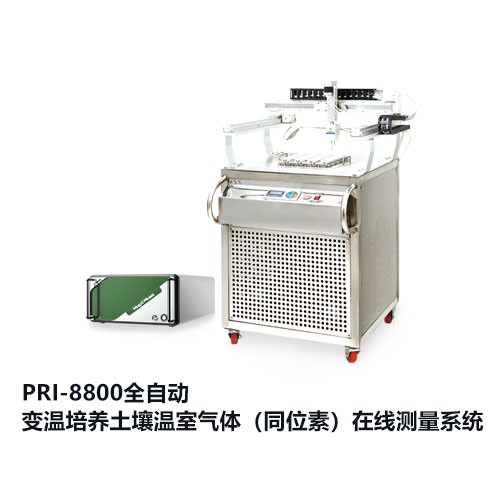
性能优势
- 可灵活对接不同分析仪(同位素分析仪、气体浓度分析仪等);
- 标配16位样品盘,也可选配4位或9位样品盘;
- 自动化程度高,无人值守,24小时不间断工作;
- 可方便拆卸土壤瓶固定装置,实现在线置换土壤瓶;
- 全自动控温系统(-20~80 ℃),控温精度优于0.1 ℃;
- 土壤温度传感器探针可频繁自动插入土壤瓶中,准确测量土壤温度;
- 高效的气体循环气路——双回路气路设计,可根据需要对CO2浓度进行预处理,调控系统内的起始CO2浓度(避免过高CO2浓度的抑制效应);
- 高效的气路设计,缩短响应时间;
- 可灵活设定的标定系统,保障测量数据的准确性;
- 友好的软件界面,可根据具体实验需要设定参数及数据存储等功能。
配置说明
PRI-8800全自动变温土壤培养温室气体(同位素)分析系统,其中标配为CO2 H2O 分析仪,也可以连接AMBA、AP2E、LI-COR 等品牌的气体和同位素分析仪。
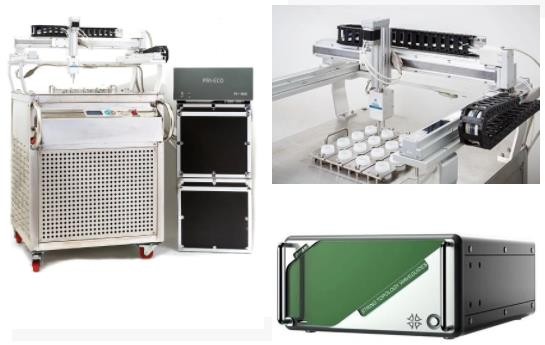
技术指标
| 指标 | 标准配置参数 | 接收定制 | 备注 |
| 系统响应时间 | <4s | ||
| 气压传感器精度 | 0.05% | ||
| 温度传感器精度 | ±0.15℃ | ||
| 气体流速 | 1L/min | 0-4L/min 可调 | |
| 培养瓶温度范围 | -20~80℃ | ● | 可根据客户需求更改温度范围 |
| 温度控制精度 | ±0.1℃ | ||
| 加热功率 | 1500W | ● | 可更换不同功率的加热器 |
| 制冷功率 | 1250W | ● | 可更换不同功率的压缩机 |
| 变温速率(升温) | 60s/℃ | ● | 跟加热器功率有关 |
| 变温速率(降温) | 90s/℃ | ● | 跟压缩机功率有关 |
| 循环泵流量 | 20L/min | ● | 可调 |
| 重复定位精度 | 0.02mm | ||
| 负载 | <2KG | ||
| 工作电压 | 24V 12.5A | ||
| 控制箱功率 | 220VAC<350W | ||
| 有效行程 | 400*400*150mm | ● | 可根据客户需要更改有效行程 |
| 控制方式 | PC | 控制箱内集成微型PC主机 | |
| 培养瓶容积 | 150mL | ● | 可更换各种容积培养瓶 |
| 气体管路 | 1/8不锈钢管或特氟龙管 | ● | 可根据客户需求更改 |
| CO2吸收剂 | NC Technologies S.r.l. | ● | 可根据客户需求更换吸收剂 |
| 采样装置尺寸 | 800*800*700mm | ||
| 控制箱尺寸 | 500*420*200mm |
研究领域
1、利用其自动、连续、快速的特点,开展区域尺度的联网研究,揭示不同区域或植被类型的Q10变异及其控制机制。受传统培养和测试方法的影响,研究人员很难开展类似的研究,虽然整合分析能一定程度解决这个问题,但也存在不同实验处理条件和实验测定方法造成的高不确定性问题。
2、开展Q10对连续温度变化过程响应研究,更真实的模拟温度变化情况,从而揭示土壤微生物呼吸对温度变化的响应机制。受传统方法的限制,当前大多数研究均在小时、天、周尺度来开展,并没有揭示真实的温度日动态。
3、更好地开展土壤微生物对水分或资源快速变化情景下的研究。例如,降水脉冲是干旱-半干旱区的常见现象,土壤微生物活性(碳矿化速率或氮矿化速率)对水分可获得性的响应一直是非常重要又具有挑战性的科学问题;类似的,土壤微生物对外界资源脉冲式供应的响应或激发效应也是近期研究热点。
4、随着设备的广泛使用与改进,尤其是与13C分析设备相结合,相信会在土壤有机质周转领域具有更多的应用前景。
部分发表文献
1.Cao YQ, Zhang Z, Xu L, Chen Z, He NP. 2019. Temperature affects new carbon input utilization by soil microbes: Evidence based on a rapid δ13C measurement technology. Journal of Resources and Ecology, 10: 202-212.
2.Liu Y, He NP, Xu L, Tian J, Gao Y, Zheng S, Wang Q, Wen XF, Xu XL, Yakov K. 2019. A new incubation and measurement approach to estimate the temperature response of soil organic matter decomposition. Soil Biology & Biochemistry, 138, 107596.
3.Liu Y, He NP, Wen XF, Xu L, Sun XM, Yu GR, Liang LY, Schipper LA. 2018. The optimum temperature of soil microbial respiration: Patterns and controls. Soil Biology and Biochemistry, 121: 35-42.
4.Liu Y, Wen XF, Zhang YH, Tian J, Gao Y, Ostle NJ, Niu SL, Chen SP, Sun XM, He NP. Widespread asymmetric response of soil heterotrophic respiration to warming and cooling. Science of Total Environment, 635: 423-431.
5.Tang ZX, Sun XL, Luo ZK, He NP, Sun JX. 2018. Effect of substrate and microbial community on soil carbon mineralization: Evidence from three zonal forests. Ecology and Evolution, 8: 879-891.
6.Tian J, He NP#, Hale L, Niu SL, Yu GR, Liu Y, Blagodatskava E, Kuzyakov Y, Zhou JZ. 2018. Soil organic matter availability and climate drive latitudinal patterns in bacterial diversity from tropical to cold-temperate forests. Functional Ecology, 32: 61-70.
7.Tian J, He NP, Kong WD, Deng Y, Feng K, Green SM, Wang XB, Zhou JZ, Kuzyakov Y, Yu GR. 2018. Deforestation decreases spatial turnover and alters the network interactions in soil bacterial communities. Soil Biology and Biochemistry, 123: 80-86.
8.Wang Q, He NP, Xu L, Zhou XH. 2018. Important interaction of chemicals, microbial biomass and dissolved substrates in the diel hysteresis loop of soil heterotrophic respiration. Plant and Soil, 428: 279-290.
9.Wang Q, He NP, Xu L, Zhou XH. 2018. Microbial properties regulate spatial variation in the differences in heterotrophic respiration and its temperature sensitivity between primary and secondary forests from tropical to cold-temperate zones. Agriculture and Forest Meteorology, 262, 81-88.
10.Li DD, Fan JJ, Zhang XY, Xu XL, He NP, Wen XF, Sun XM, Blagodatskaya E, Kuzyakov Y. 2017. Hydrolase kinetics to detect temperature-related changes in the rates of soil organic matter decomposition. European Journal of Soil Biology, 81: 108-115.
11.Li J, He NP, Xu L, Chai H, Liu Y, Wang DL, Wang L, Wei XH, Xue JY, Wen XF, Sun XM. 2017. Asymmetric responses of soil heterotrophic respiration to rising and decreasing temperatures. Soil Biology & Biochemistry, 106: 18-27.
12.He NP, Yu GR. 2016. Stoichiometrical regulation of soil organic matter decomposition and its temperature sensitivity. Ecology and Evolution, 6: 620-627.
13.Shi Y, Sheng LX, Wang ZQ, Zhang XY, He NP, Yu Q. 2016. Responses of soil enzyme activity and microbial community compositions to nitrogen addition in bulk and microaggregate soil in the temperate steppe of Inner Mongolia. Eurasian Soil Science, 49(10): 1149-1160.
14.Wang Q, He NP, Liu Y, Li ML, Xu L. 2016. Strong pulse effects of precipitation event on soil microbial respiration in temperate forests. Geoderma, 275: 67-73.
15.Wang Q, He NP, Yu GR, Gao Y, Wen XF, Wang RF, Koerner SE, Yu Q. 2016. Soil microbial respiration rate and temperature sensitivity along a north-south forest transect in eastern China: Patterns and influencing factors. Journal of Geophysical Research: Biogeosciences, 121: 399-410.
16.Zhang XY, Tang YQ, Shi Y, He NP, Wen XF, Yu Q, Zheng CY, Sun XM, Qiu WW. 2016. Responses of soil hydrolytic enzymes, and ammonia-oxidizing bacteria and archaea to nitrogen applications in a temperate grassland in Inner Mongolia. Scientific Reports, 6: 32791.
17.Li J, He NP, Wei XH, Chai H, Wen XF, Xue JY, Zuo Y. 2015. Changes in temperature sensitivity and activation energy of soil organic matter decomposition in different Qinghai-Tibet Plateau grasslands. PlosOne, 10: e0132795. doi:10.1371/journal. pone.0132795.
18.Wang Q, Wang D, Wen XF, Yu GR, He NP, Wang RF. 2015. Differences in SOM decomposition and temperature sensitivity among soil aggregate size classes in temperate grasslands. PlosOne, 10(2): e0117033. doi:10.1371/ journal.pone.0117033.
19.Xue JY, Zhang HX, He NP, Gan YM, Wen XF, Li J, Zhang XL, Fu PB. 2015. Responses of SOM decomposition to changing temperature in Zoige alpine wetland, China. Wetland Ecology & Management, 23: 977-987.
20.He NP, Wang RM, Dai JZ, Gao Y, Wen XF, Yu GR. 2013. Changes in the temperature sensitivity of SOM decomposition with grassland succession: Implications for soil C sequestration. Ecology and Evolution, 3: 5045-5054.













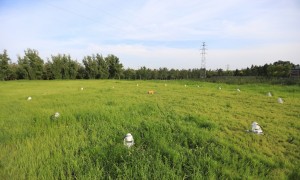
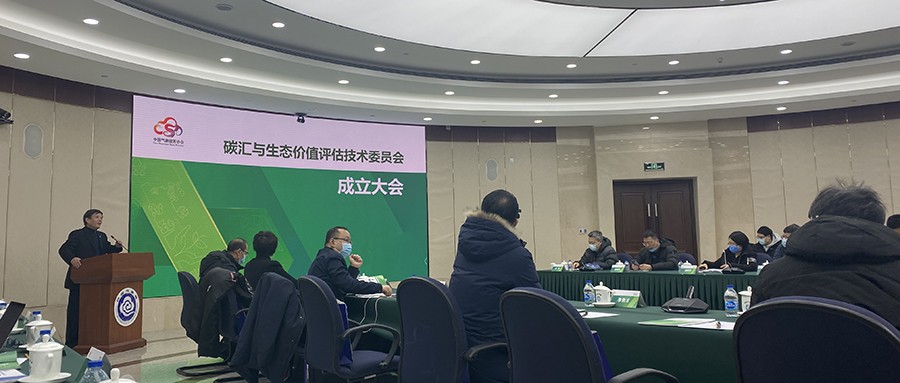


 010-51651246
010-51651246